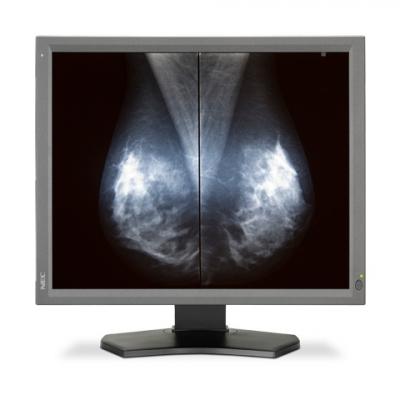
December 2, 2016 — New research presented at the 2016 Radiological Society of North America (RSNA) annual meeting found recall rates, cancer detection and invasive cancer detection for women under age 50 were significantly improved with the addition of tomosynthesis to mammography. The research was presented by Stephen Rose, M.D., chief medical officer of Solis Mammography and president of Rose Imaging Physicians Group, Houston.
In January, the U.S. Preventive Services Task Force changed its recommendations, advising women to start their mammograms at age 50. In October 2015, after 30 years, the American Cancer Society changed its guidelines in Breast Cancer Screening for Women at Average Risk: 2015 Guideline Update, advising women to begin screening by age 45 and then biennial (every two years) after age 55. One of the major concerns both reports cited was false positives (also known as recall rates).
The men and women who participated in these organizations' changes were not peer-reviewed radiologists, used 2-D mammography research and did not consider the benefits of tomosynthesis, aka 3-D mammography, according to Rose.
According to the American Cancer Society's Breast Cancer Facts & Figures report, in 2015 231,840 women were diagnosed with invasive breast cancer and 46,350 were under the age of 50 when diagnosed.
Additionally, younger women (under the age of 50) are more likely to have dense breast tissue, increasing the possibility of a false negative (not detecting an existing asymptomatic breast cancer). Breast density makes it more difficult for radiologists to see abnormal growths using digital mammography (2-D).
Rose and Solis Mammography collected data from Jan. 1-Dec. 31, 2015, from a network of community-based screening centers (geography includes North Carolina, Ohio, Texas and Arizona) of women from 40-49 years old to investigate if the addition of tomosynthesis to mammography could improve screening performance outcomes for women under the age of 50. The study covered 65,457 screening exams, and 45,320 digital mammography (2-D) exams and 20,137 tomosynthesis exams were performed. (Tomosynthesis patients incurred an additional out-of-pocket fee for the test.) The Chi square test was performed.
The results were as follows:
|
Women >50 Years Old |
Digital Mammography (2-D) |
Tomosynthesis (3-D) |
Difference |
Probability (p) |
|
Recall Rates per 1000 |
115 |
108 |
7 |
p=0.013 |
|
Total cancer Detection Rates |
2.1 |
3.1 |
1.0 |
p=0.021 |
|
Invasive Cancer Detection Rates |
1.2 |
1.8 |
0.8 |
p=0.014 |
The research also showed improvement of recall rates and cancer detection rates increases with breast density:
|
Women >50 Years Old |
Digital Mammography (2-D) Cancer Detection |
Tomosynthesis (3-D) Cancer Detection |
Digital Mammography (2-D) Recall Rates |
Tomosynthesis (3-D) Recall Rates |
|
Fatty |
0 |
1 |
5 |
6 |
|
Scattered Fibroglandular |
2 |
3 |
9 |
8 |
|
Heterogeneously Dense |
3 |
4 |
14 |
13 |
|
Extremely Dense |
0 |
4 |
11 |
12 |
The effects of adding tomosynthesis (3-D) in women under 50 years old were:
- Decreased recall rates by 6 percent (p=0.013)
- Increased cancer detection rates by 67 percent (p=0.021)
- Increased positive predictive values for recall by 56 percent
Other conclusions from the study were:
- The addition of tomosynthesis (3-D) to mammography in women 40 to 49 years old shows improved outcomes in recall rates and cancer detection rates (similar to the general population);
- Tomosynthesis (3-D) addresses a primary concern regarding screening women in their 40s by reducing recall rates, as cited in both the USPSTF and the ACS guideline changes; and
- Adding tomosynthesis (3-D) to mammography takes about the same amount of time as digital mammography yet takes around 60 pictures. Radiologists can now see cancers as early as stage zero with tomosynthesis.
"Our study is confirming the benefits of tomosynthesis. For a disease with no known form of prevention, early detection is key and the earliest detection is with tomosynthesis, especially in women under 50 years old with dense beast tissue," commented Rose.
"For years, radiologists and referring physicians have attested to the importance of early detection in saving lives and in offering women the best treatment options," said James Polfreman, president and CEO, Solis Mammography. "Adding tomosynthesis to mammography represents the best technology available, offering more and clearer images of breast tissue, and less recalls, which in turn means less anxiety for the women we serve. Medicare began coverage for 3-D mammography in January 2015 and Cigna recently announced that it is now including 3-D mammography in their national coverage plans. This is an important milestone for women's health, and we hope that with research like Dr. Rose's, more private insurers will follow suit."
For more information: www.rsna.org


 April 18, 2024
April 18, 2024 








